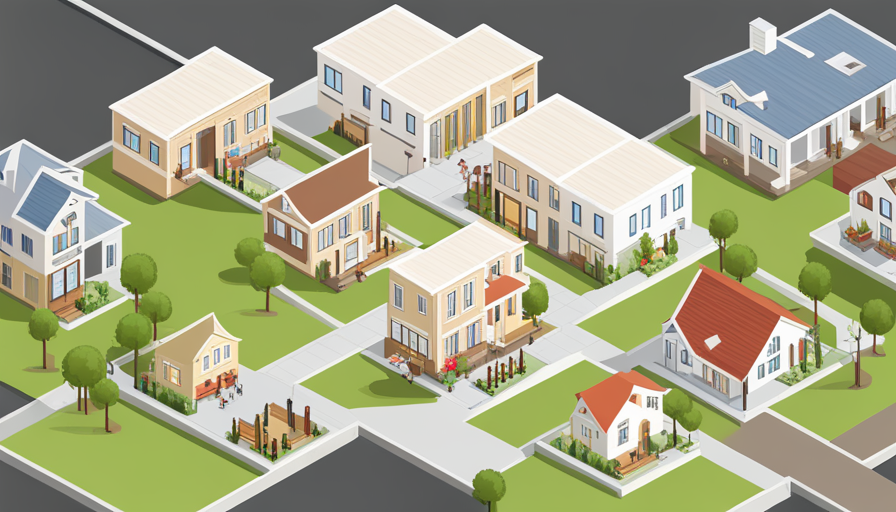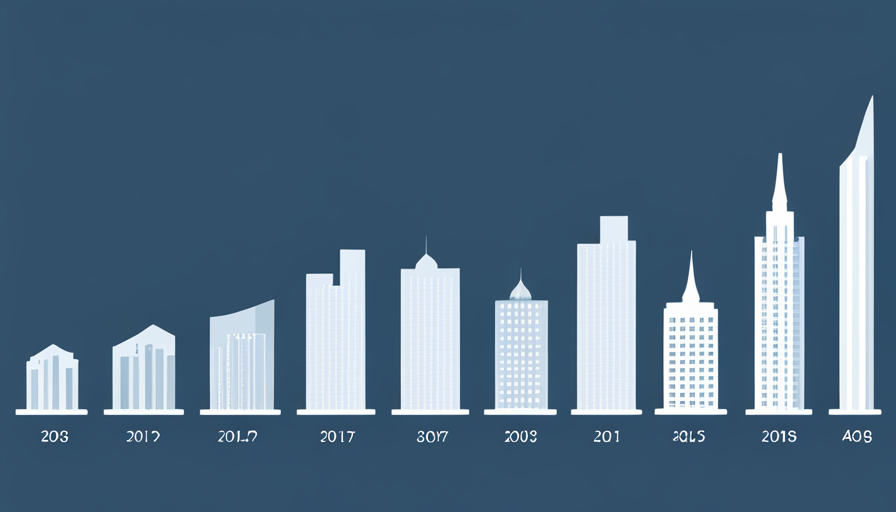In the intertwined world of demographics and residential real estate, one influences the other like threads in a tapestry. You’ll quickly see how age, income, family structures, and population growth impact housing demand, affordability, and property values.
By understanding these dynamics, you’re better equipped to interpret real estate statistics and make informed decisions. So, dive into the fascinating interplay of demographics and real estate.
It’s not just numbers on a page, it’s a reflection of our society’s evolving needs and preferences.
Understanding Demographics in Real Estate

In light of understanding demographics in real estate, you’ll realize it’s crucial to delve into the complex connection between population trends and housing market dynamics. Understanding this connection requires a detailed demographics trend analysis. This analysis helps to decipher how shifts in age, ethnicity, and income levels impact the housing market.
You’ll find that the age factor has a direct correlation with real estate demand. For instance, millennials entering their home-buying years will significantly increase the demand for housing. Similarly, the baby boomer generation moving into retirement can lead to an increased demand for downsized homes or retirement communities.
The ethnicity impact on real estate is also significant. Ethnic groups’ preferences, influenced by cultural or socioeconomic factors, can shape housing market trends. For example, some groups may prefer multi-generational homes, while others may lean towards urban living.
Income trends also play a pivotal role. When income levels rise, the demand for luxury homes can surge, while a decline can increase demand for affordable housing.
Therefore, to comprehend real estate trends effectively, you need a keen understanding of demographic dynamics. These insights can guide you in making informed real estate decisions.
Age and Residential Property Demand

You’ll find that age significantly influences residential property demand, shaping the dynamics of the real estate market. Distinct age groups, such as retirees and millennials, exhibit unique trends in housing preferences and buying habits.
Analyzing data, we can highlight some key observations:
* Retirement Relocations: Older people, particularly retirees, often downsize or move to warmer climates. This contributes to a higher demand for smaller, low-maintenance properties in retirement-friendly regions.
* Millennial Homeownership: Millennials, now entering their prime home-buying years, are increasingly impacting the market. They often seek affordable housing in urban areas, driving up demand in these regions.
* Middle-aged Buyers: This group typically seeks larger homes to accommodate growing families, impacting demand in suburban areas.
These age-based trends reveal the ebb and flow of the real estate market, demonstrating how age dictates demand.
However, it’s crucial to note that factors such as economic conditions and cultural shifts can also influence these trends. Therefore, while age is a critical factor, a holistic approach is necessary for a comprehensive understanding of residential property demand.
Income Levels and Housing Affordability

Beyond age, another significant factor influencing housing affordability and demand is your income level. Higher income levels provide greater housing options and can significantly influence the gentrification of an area. Conversely, lower income levels limit housing choices.
Mortgage rates also play a crucial role in housing affordability. Lower rates make housing more affordable, while higher rates can push housing out of reach for many, particularly those in lower income brackets.
Consider the following table:
| Income Bracket | Mortgage Rate % | Gentrification Effect |
|---|---|---|
| Low Income | High Rate | Negative Impact |
| Middle Income | Moderate Rate | Neutral Impact |
| High Income | Low Rate | Positive Impact |
As you can see, there’s a significant relationship between your income level, mortgage rates, and their combined impact on gentrification effects. Lower-income brackets face higher mortgage rates and negative gentrification effects. Middle-income brackets experience moderate mortgage rates and neutral gentrification effects. High-income brackets benefit from lower mortgage rates and positive gentrification effects.
Understanding these relationships helps to predict housing trends, inform investment decisions, and develop policy responses to ensure affordability for all income levels.
Family Structure Influence on Housing

Your family structure can dramatically shape the type of housing you’ll need, with single individuals, couples, and families of four each requiring different space and amenities. Parental homeownership, for example, often influences your housing choice. If your parents own their home, you’re more likely to do the same, mirroring their preference for stability and investment.
Housing policies also play a significant role. They can either limit or broaden your options based on your family size and structure. Such policies often aim to accommodate diverse family needs, ensuring equitable access to housing.
Consider the following factors that can influence your housing needs:
– Single Individuals: Generally prefer smaller units like studio or one-bedroom apartments. They prioritize locations close to work, social amenities, and vibrant nightlife.
– Couples: Often opt for two-bedroom apartments or small houses, with considerations for good schools and child-friendly environments in case of future family expansion.
– Families of Four or More: Typically require larger homes with multiple bedrooms and bathrooms. They prioritize safe neighborhoods, proximity to good schools, and ample outdoor spaces.
Understanding these factors can help you make informed decisions about your housing needs and navigate the complexities of the real estate market.
Population Growth and Property Values

While you might not realize it, population growth in your area can significantly drive up property values, creating a competitive real estate market. This is largely due to urbanization effects and migration patterns.
Urbanization, or the shift of population from rural to urban areas, often leads to increased demand for housing in cities. As more people move into an area, the demand for housing increases, and so do property values. Migration patterns, on the other hand, can either positively or negatively affect property values. Influxes of residents can drive up property values, while out-migration can lead to a surplus of housing and lower prices.
To help you understand, let’s look at a simple table:
| Factor | Effect on Demand | Effect on Property Value |
| Urbanization Effect | Increases | Increases |
| In-Migration | Increases | Increases |
| Out-Migration | Decreases | Decreases |
Conclusion
So, you see, demographics decidedly dictate residential real estate realities.
From the fluctuating demand driven by diverse ages to the impact of income inequalities on affordability, family structures shaping housing needs, and population growth propelling property values – the data doesn’t deceive.
Truly, demographic details deliver a deep understanding of our dynamic real estate realm.
Remember, your real estate rewards rely on recognizing and responding to these relevant residential realities.





